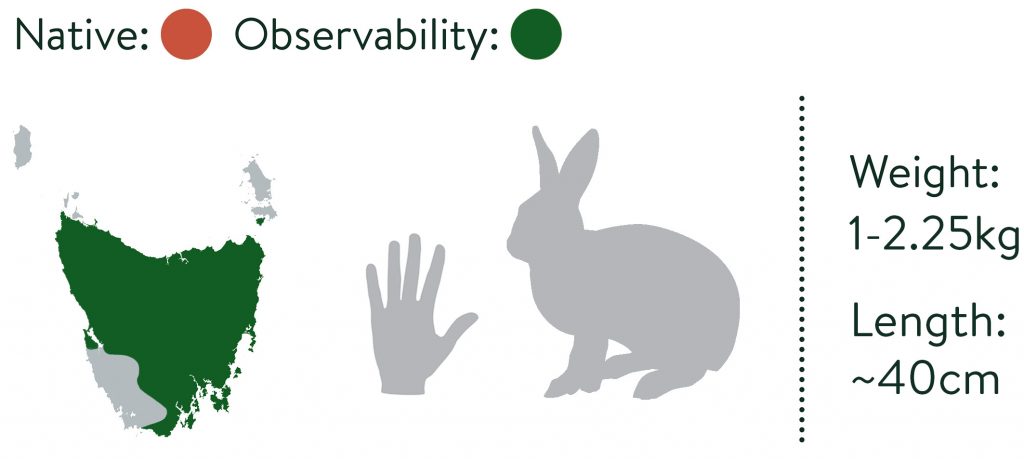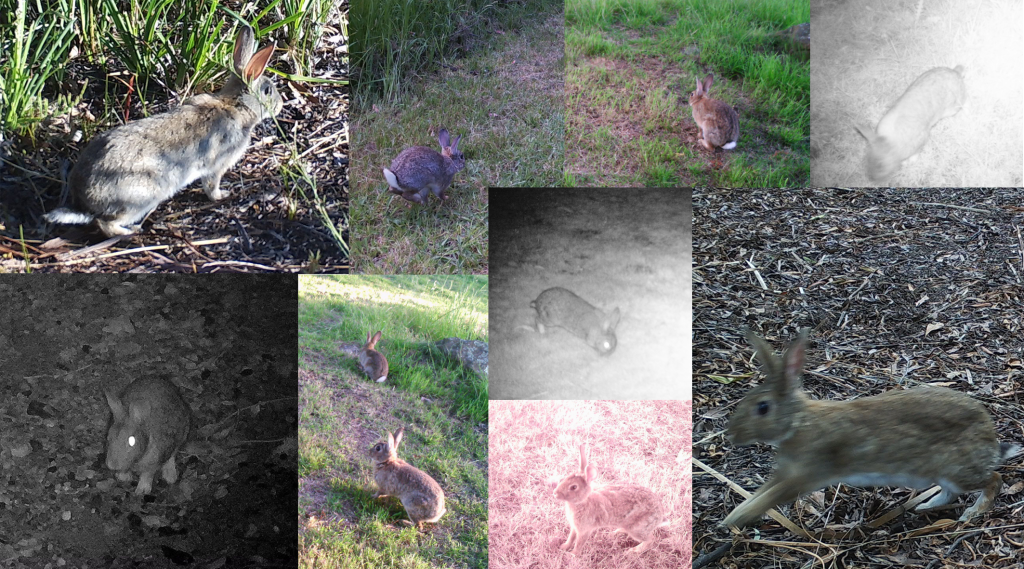Leporidae | Oryctolagus cuniculus
Five domestic rabbits were introduced to Australia with the arrival of the first fleet (1788) but the current mainland lineage has been traced back to a single introduction of wild individuals in 1859 near Geelong, Victoria. Rabbits were introduced primarily for hunting and meat. Tasmanian rabbits have a mix of both domestic and wild ancestry. The first feral populations of rabbits in Tasmania were recorded in 1827 in the states south-east but population numbers didn’t explode until the 1860s.

Lifestyle
The colonisation of Australia by rabbits is the fastest of any mammal invasion in the world, taking just 50 years to establish in an area 13 times the size of their native range. Rabbits dig large communal burrows, known as warrens, for shelter. A single warren can cover a few hundred square metres. Female rabbits can breed at any time of the year once they reach about four months old. They can have up to five litters annually, each with up to five young (kittens) which leave the warren around 18 days after their birth. Rabbits rarely live beyond six years in the wild.

Key identifying features
Long hind limbs with small front limbs. Bulging eyes. Ears are large and long, but no longer than the length of the head. Coat is typically grey-brown with a pale underbelly but black, ginger and white coloured rabbits also occur in the wild. Tail is white underneath and held upwards while running. Shelters in burrows.
Similar species
European hare – Larger body size; much longer hind legs; longer ears with black tips; tail positioned downward when running with black stripe visible.
Habitats
Most habitats, particularly those that have been disturbed. Common in urban, coastal and agricultural areas.
Diet
Generalist grazer. Rabbits mostly eat grasses, both exotic and native, but will also consume seedlings, vines, plant roots and agricultural crops.
Impact
Rabbits are well-known agricultural pests, estimated to cost the Australian industry $206 million in production losses each year. Apart from competing with livestock for food and causing damage to crops, their digging can alter soil characteristics and encourage erosion. The same is true for native environments. Rabbits compete with native herbivores for food. Their warrens can lead to soil degradation and dramatic losses in vegetation cover and species diversity. Consequently, native wildlife may have fewer places to shelter from predators. Because rabbits are a preferred prey item for cats, their presence also supports an abundance of these feral predators.
